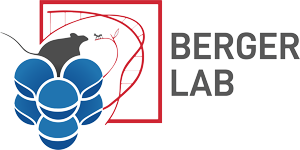Our laboratory studies epigenetic regulation in a variety of systems (human, mice, S. cerevisiae, and eusocial insects), focusing on chromatin mechanisms underlying aging, metabolism, gametogenesis, neurodegeneration, cancer (p53 regulation), and behavior.
Research Overview
Our research focuses on regulation of the nuclear genome in mammals and model organisms. The long strands of nuclear DNA are associated with packaging proteins, called histones, into a structure known as chromatin, akin to the way thread is organized around a spool. We are particularly interested in changes to chromatin structure via chemical modification of the histone proteins, and how attachment of certain chemical groups onto the histones leads to altered chromatin function. These targeted structural changes are conceptually like the unraveling of the thread to reach specific, buried sections. We are also interested by functional changes in chromatin, caused by these histone modifications, that persist through cell division from one cell into two daughter cells; these persistent, or epigenetic, changes are of particular interest because they are key to normal and abnormal growth: they occur during organism development into multicellular tissues and organs, and are typically disrupted during abnormal reversal of tissue specialization and growth control as in cancer, as well as during aging of cells and individuals.
Research Focus
The basis of genome regulation is a fundamental biological question. Our past research findings have helped to establish the prevailing view that histone modifications regulate genomic functions, including transcription of genes, DNA replication during cell division, repair of DNA mutations as a result of DNA damage, and other processes. Our work has focused on transcription, or the turning on and off of gene expression, and the myriad of histone modifications that occur, such as acetylation, phosphorylation, and methylation, among other chemical changes. We have identified many new modifications and the enzymes that carry them out, as well as understanding how the enzymes are recruited to certain locations in the genome. There is now an explosion of research in the field of chromatin regulation and how these histone modifications function to regulate the genome. We have contributed to the current ideas, including how histone PTMs function in combinatorial patterns, and in temporal sequences, to set up the intricate timing and spatial requirements of turning genes on and off. For example, we have extensively studied a pattern on histone H3 consisting of Serine10 phosphorylation and Lysine14 acetylation. We identified the enzymes that carry out the linked modifications, established the structural and biochemical basis of the cross-talk, and discovered a binding protein that specifically associates with the pattern, rather than the individual modifications. In a second example, we studied the timing of histone H2B ubiquitylation followed by deubiquitylation, identified the deubiquitylating enzyme, and determined the biochemical role of the dynamic switch, i.e. in regulating elongation by RNA polymerase II through transcribed genes.
Our work has also helped to reveal how some of these modifications, which were first thought to only occur on histone substrates, function to regulate non-histone proteins. In particular, we have identified new modifications on the tumor suppressor and transcription factor, p53. We focus on p53 because of its key function in regulating growth to prevent cancer, and so we wish to determine how these individual modifications turn p53 function on and off. Our recent findings show that methylation and demethylation of p53 at a single lysine residue both activate and repress p53 function. This regulation occurs by promoting or inhibiting, respectively, the binding of a p53 coactivator protein, called 53BP1. We believe this type of regulation of p53 will prove to be common among non-histone proteins and is an exciting example of our ever-changing understanding of epigenetic regulation that goes beyond histone modification.
Research Future Directions
Our current focus is to continue to discover novel chromatin factor modifications and their mechanisms of action. However, we are now endeavoring to elucidate the role and importance of these modifications in normal and abnormal cellular function. We are in particular keen to determine whether these modifications are important in persistent or epigenetic cellular states. We aim to probe and investigate how physical changes in chromatin translate to biological processes such as regulation of metabolism, neurodegeneration, and gametogenesis, as well as broader phenomenon such as aging, behavior and cancer. As one example, we previously initiated a study of chromatin changes during replicative aging in the model S. cerevisiae. We discovered that telomeric changes in chromatin are centrally involved. Specifically, in old cells there is a reduction in the level of the histone deacetylase Sir2, which is crucial in maintaining compact chromatin in sub-telomeric regions, leading to an increase in histone H4 K16 acetylation by the acetylase Sas2. The result of this is decompaction of the teleomeric chromatin in the old cells – which has important implications for cell viability and senescence.
Epigenetics is still an emerging field in biology and is exerting an increasingly profound impact on medicine because of its potential explanatory power in development and disease. Our lab’s continued goal is to further the study of the epigenetic regulation of biology, including aging, metabolism, animal behavior (specifically in ants), cancer immunotherapy, neuroepigenetics, and reproduction – evidence that epigenetics plays an important role in all facets of life.
